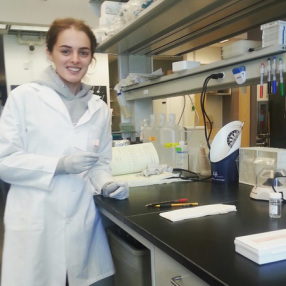We often hear that we are what we eat. Most people know how important it is to eat balanced healthy foods to stay healthy, but the importance of diet and nutrients is increased when you are ill. Often the symptoms or side effects of the disease are impaired metabolic function. Even eating a healthy diet won’t completely rectify this concern. Chronically ill patients sometimes can’t obtain the nutrients they require and/or the metabolizing process of nutrients has broken down. This breakdown impacts other critically important bodily functions.
Basics of Nutrition and Metabolism
Figure 1 – https://prezi.com/j5mbaoirevn1/copy-of-nutrition-vs-metabolism/#
In the recent article from National Institute of Health in November 2016 researchers found in the study “Metabolic Biomarkers and Neurodegeneration: A Pathway Enrichment Analysis of Alzheimer’s Disease, Parkinson’s Disease, and Amyotrophic Lateral Sclerosis”:
Neurodegenerative diseases such as Alzheimer’s disease (AD), Parkinson’s disease (PD), and amyotrophic lateral sclerosis (ALS) lack robust diagnostics and prognostic biomarkers. Metabolomics is a postgenomics field that offers fresh insights for biomarkers of common complex as well as rare diseases. Using data on metabolite-disease associations published in the previous decade (2006-2016) in PubMed, ScienceDirect, Scopus, and Web of Science, we identified 101 metabolites as putative biomarkers for these three neurodegenerative diseases. Notably, uric acid, choline, creatine, L-glutamine, alanine, creatinine, and N-acetyl-L-aspartate were the shared metabolite signatures among the three diseases. The disease-metabolite-pathway associations pointed out the importance of membrane transport (through ATP binding cassette transporters), particularly of arginine and proline amino acids in all three neurodegenerative diseases. When disease-specific and common metabolic pathways were queried by using the pathway enrichment analyses, we found that alanine, aspartate, glutamate, and purine metabolism might act as alternative pathways to overcome inadequate glucose supply and energy crisis in neurodegeneration. These observations underscore the importance of metabolite-based biomarker research in deciphering the elusive pathophysiology of neurodegenerative diseases. Future research investments in metabolomics of complex diseases might provide new insights on AD, PD, and ALS that continue to place a significant burden on global health.[1]
A year earlier, another study published in JAMA, October 2015, “Association Between Dietary Intake and Function in Amyotrophic Lateral Sclerosis” concluded:
that Antioxidants, carotenes, fruits, and vegetables were associated with higher ALS function at baseline by regression of nutrient indices and weighted quantile sum regression analysis. We also demonstrated the usefulness of the weighted quantile sum regression method in the evaluation of diet. Those responsible for nutritional care of the patient with ALS should consider promoting fruit and vegetable intake since they are high in antioxidants and carotenes.[2]
Nutrition is especially important for ALS patients, and following the Deanna Protocol™ “supercharges” the right nutrition for patients with ALS (PALS). It also aids as a metabolic therapy and supports energy metabolism. A study published in 2014 by the National Institute of Health investigated and found that the Deanna Protocol® (DP):
Amyotrophic Lateral Sclerosis (ALS), also known as Lou Gehrig’s disease, is a neurodegenerative disorder of motor neurons causing progressive muscle weakness, paralysis, and eventual death from respiratory failure. There is currently no cure or effective treatment for ALS. Besides motor neuron degeneration, ALS is associated with impaired energy metabolism, which is pathophysiologically linked to mitochondrial dysfunction and glutamate excitotoxicity. The Deanna Protocol (DP) is a metabolic therapy that has been reported to alleviate symptoms in patients with ALS. In this study we hypothesized that alternative fuels in the form of TCA cycle intermediates, specifically arginine-alpha-ketoglutarate (AAKG), the main ingredient of the DP, and the ketogenic diet (KD), would increase motor function and survival in a mouse model of ALS (SOD1-G93A). ALS mice were fed standard rodent diet (SD), KD, or either diets containing a metabolic therapy of the primary ingredients of the DP consisting of AAKG, gamma-aminobutyric acid, Coenzyme Q10, and medium chain triglyceride high in caprylic triglyceride. Assessment of ALS-like pathology was performed using a pre-defined criteria for neurological score, accelerated rotarod test, paw grip endurance test, and grip strength test. Blood glucose, blood beta-hydroxybutyrate, and body weight were also monitored. SD+DP-fed mice exhibited improved neurological score from age 116 to 136 days compared to control mice. KD-fed mice exhibited better motor performance on all motor function tests at 15 and 16 weeks of age compared to controls. SD+DP and KD+DP therapies significantly extended survival time of SOD1-G93A mice by 7.5% (p = 0.001) and 4.2% (p = 0.006), respectively. Sixty-three percent of mice in the KD+DP and 72.7% of the SD+DP group lived past 125 days, while only 9% of the control animals survived past that point. Targeting energy metabolism with metabolic therapy produces a therapeutic effect in ALS mice which may prolong survival and quality of life in ALS patients.[3]
One thing shown over and over via these studies and anecdotal reports from PALS is that the Deanna Protocol® Metabolic Therapy is helping many PALS with quality of Life.
New studies are underway. the scientists at University of South Florida (USF) are moving forward with the experiment to determine the efficacy of the Deanna Protocol® Plan when combined with glutamic oxaloacetate transaminase (GOT). [4]
The DP® Plan focuses on cell metabolism. It delivers Alpha-ketoglutarate (AKG) to the Krebs Cycle in the neurons. The increase in AKG enables their mitochondria to produce enough energy to keep cells alive, despite their exposure to an unhealthy amount of extracellular glutamate. AKG usually does not pass through the cell membranes in normal healthy cells. Based on our experience, we found that the permeability of the cell membrane in diseased or damaged cells changes and allows AKG to permeate the cells. Due to the fact that AKG only enters diseased cells, the substance only goes where it is needed.
If you need more information on how Simplesa® Deanna Metabolic Plan can help you, please contact us for assistance.
Footnotes:
[1] https://www.ncbi.nlm.nih.gov/pubmed/27828769
[2] http://jamanetwork.com/journals/jamaneurology/fullarticle/2570546
[3] https://www.ncbi.nlm.nih.gov/pubmed/25061944
[4] https://www.winningthefight.org/latest-developments
















